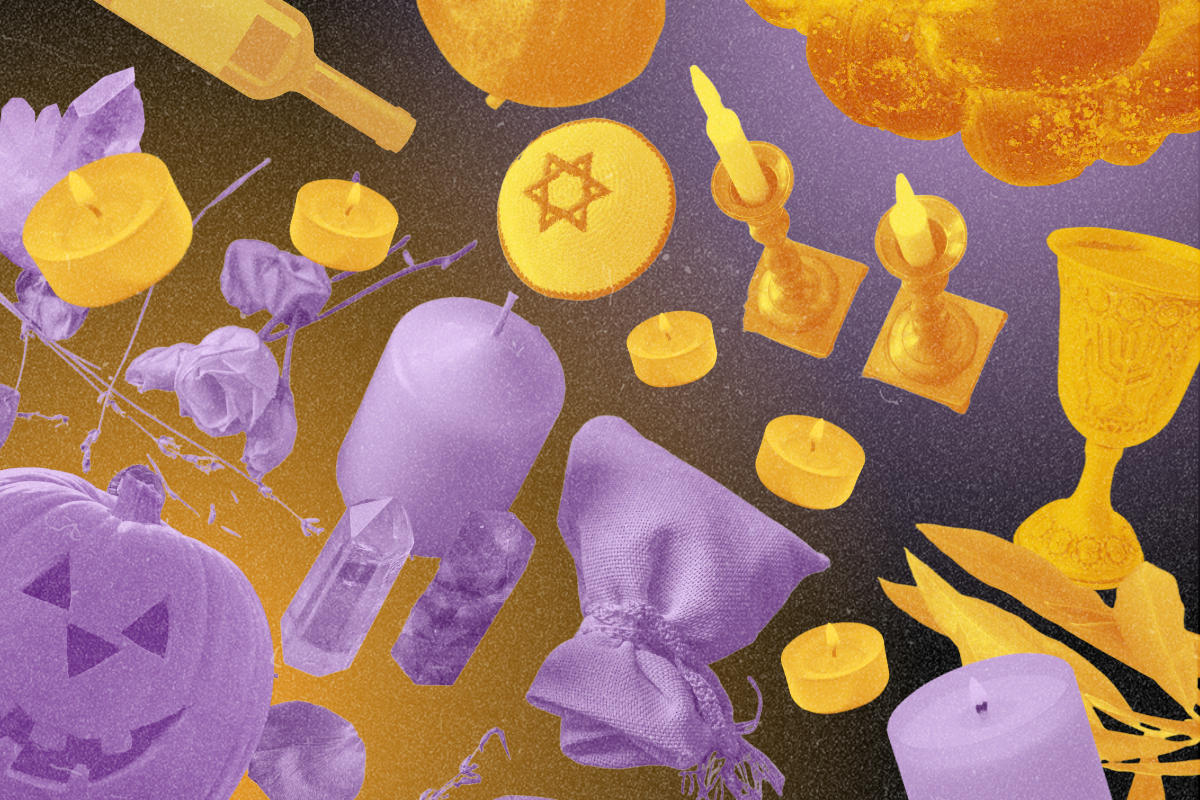“The veil is at its thinnest on Halloween,” my mother used to tell me in a whisper as she lit the candles on our altar. Lovingly placed between jewelry and amongst dried rose petals were images of our beloved dead. Every year, a few weeks before Halloween, my mother would start dressing our altar in the memories of those we’d lost over the years. A picture of Jody, of Steve, of Young, of Grandmama, of Granny. Amidst my excitement about trick-or-treating and my annual rewatch of Halloween favorites, my mother taught me the value of remembering our dead, the value of holding death in one hand while we held life in the other.
I always loved decorating the altar; it was something I asked my mother about as frequently as I asked her when we were able to pull out the Halloween decorations. Because for me, there is no Halloween fun, no “spooky season,” without an acknowledgment of the heaviness and sacredness of the day. My mother’s brand of Paganism had a strange and beautiful way of finding the sacred in the mundane. What I have always found the most compelling about Paganism is that it does not appropriate other faiths, but it does acknowledge that what is sacred for others may also be held as sacred by you.
I was raised Pagan, and while that word literally means “non-Christian,” my mother and I always took it to reflect a sort of scramble of Celtic and Indigenous and Latinx religions and traditions. I think that her frank exploration of religion and the way she combined so many traditions is half the reason I found Judaism and converted as an adult. And while Jews are obviously discouraged from participating in religious holidays outside of Judaism, I’ve found that Halloween is a holiday that does not sit at odds with my Judaism.
As I consider the way I was raised, I think that Halloween might have been as close as my Pagan mother could get to Judaism without actually being Jewish. The way we celebrated in my home felt like what I’ve learned of Tisha B’av, our universal day of mourning, or the reciting of the Yizkor or the celebration of yahrtzeits. The Halloween of my childhood draws all of those things together and amplifies them, which is why I think I’ll always celebrate the holiday.
My mother didn’t just decorate our altar with pictures and candles. She would also pour an offering of wine and would leave an offering of food, often bread, on the table every year — she was setting the table for our dead. As I think back on my childhood now, her traditions strike me as similar to my traditions on Shabbat: I light candles, I pour wine, I set out challah and I invite people to my table. While I invite the living, I can’t imagine that the dead don’t also sit with us from time to time, holding us in the embrace of our ancestors.
When I converted, it came at the end of a very long battle with an existential dread I couldn’t seem to shake. I was constantly worried about death, about what might happen to me after I died, about what death itself might be like. I found myself terrified all the time that my husband might not come home again when he went to the store or that I might die as I drove to work. Judaism has soothed so many of those fears, allowing me the space to embrace death, to understand it as a part of our life cycle. During conversion classes, an entire section was dedicated to the life cycle, beginning with birth and ending with death. This understanding, coupled with a love for Hashem, has allowed me to find a space to breathe into the fear and dread.
This year, during my first Halloween as a Jew, I plan to marry the traditions of my childhood with the traditions of my new faith. I plan to set the table for my dead and invite them to dine with me, to say the Mourner’s Kaddish for them, to celebrate a sort of communal yahrtzeit for all those I’ve lost. And I plan to set their pictures on an altar that holds my kiddush cup and shabbos candles: my Judaism and my childhood sitting side by side.



